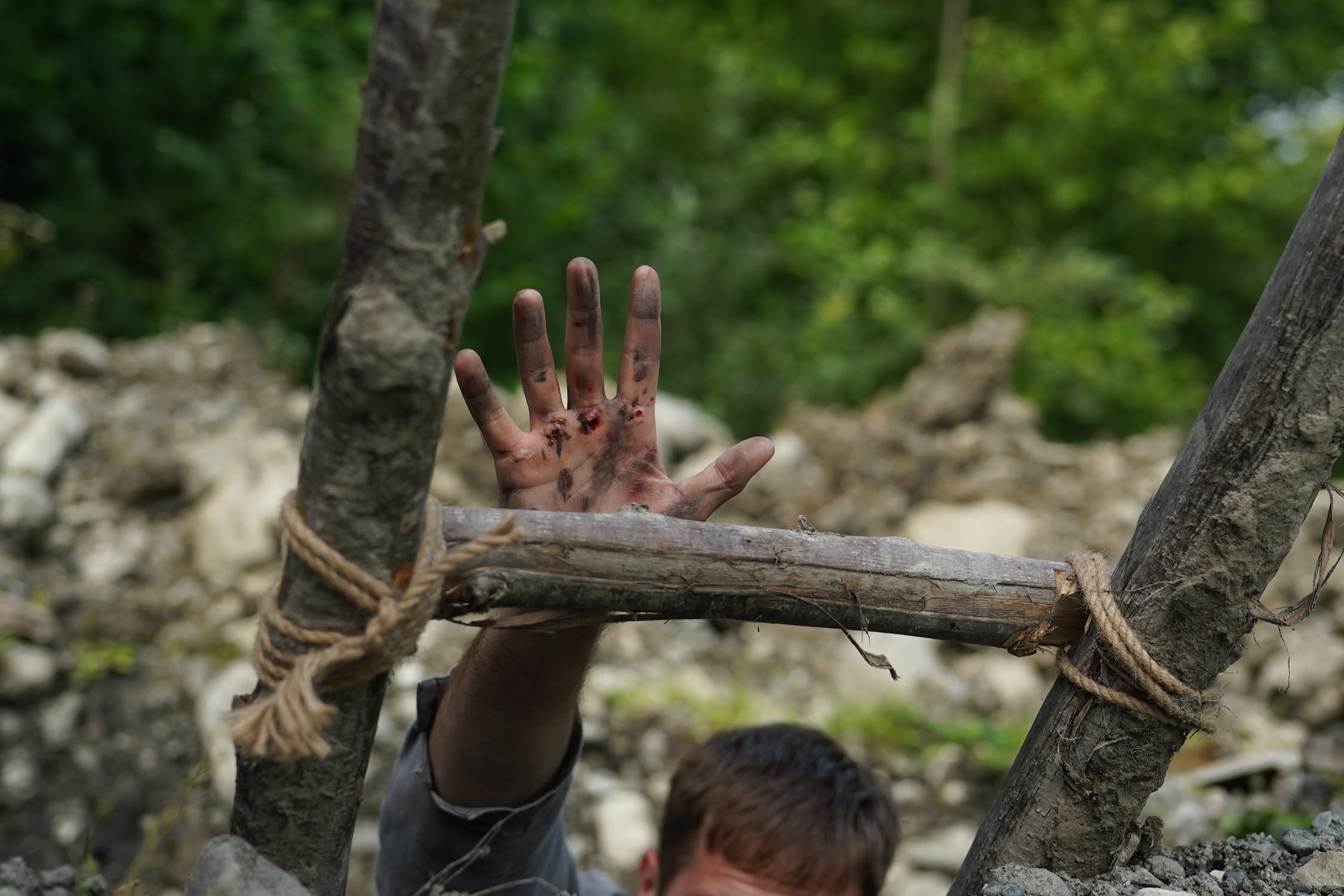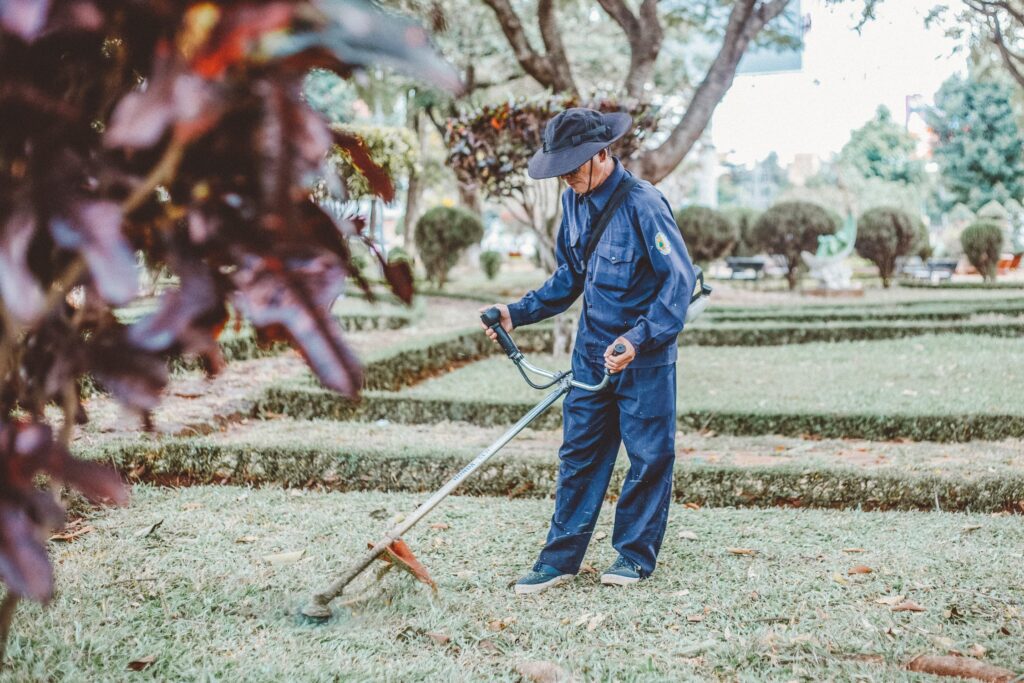Landscaping projects can transform ordinary outdoor spaces into stunning and functional areas, enhancing the beauty of homes and commercial properties. Our great town of Stouffville is especially known for our beautifully landscaped homes! However, amid the excitement of creating picturesque landscapes, it’s crucial not to overlook safety considerations. Whether one is a professional landscaper or a DIY enthusiast, adhering to proper safety guidelines is essential to prevent accidents and injuries. In this article, we will explore a comprehensive set of safety tips for landscaping, equipping the average homeowner, landscaper or gardener with the knowledge needed to create beautiful outdoor spaces while prioritizing safety. And for those who don’t want to endanger themselves – let the professionals do it!
Planning and Preparation:
Before diving into any landscaping project, take time to plan and prepare adequately. This step significantly reduces the risk of accidents and ensures a smooth and safe operation. Here are some key considerations:
a. Familiarize oneself with the site: Assess the area’s terrain, existing utilities, and potential hazards, such as underground wires, pipes, or unstable ground.
b. Obtain necessary permits: Depending on the scale of one’s project, check with local authorities regarding permits or restrictions.
c. Gather the right tools and equipment: Make sure to have the appropriate tools, safety gear, and equipment for the job, including gloves, goggles, helmets, sturdy footwear, and respiratory protection.
Electrical Safety:
Landscaping often involves working with electrical components, such as outdoor lighting, power tools, and irrigation systems. Electrical safety should be a top priority to prevent electrical shocks, fires, and other hazards:
a. Inspect electrical cords: Regularly check cords for damage, fraying, or exposed wires. Replace damaged cords immediately.
b. Keep cords away from water: Ensure electrical cords and tools are kept away from wet areas to avoid the risk of electric shock.
c. Use Ground Fault Circuit Interrupters (GFCIs): Install GFCIs on all outdoor electrical outlets to protect against electrical shock.
d. Hire a qualified electrician: For complex electrical installations, it’s best to consult a professional electrician to ensure compliance with safety standards.
Proper Handling of Tools and Equipment:
Landscaping often involves the use of various tools and machinery. Following proper handling techniques and maintenance protocols is crucial to avoid accidents and injuries:
a. Read and follow manufacturer instructions: Familiarize oneself with the operation, maintenance, and safety guidelines for all tools and equipment.
b. Use tools for their intended purpose: Avoid using tools for tasks they were not designed for, as it can lead to accidents or tool malfunctions.
c. Maintain sharp and clean tools: Keep cutting tools sharp and in good condition to prevent slips and avoid exerting excessive force.
d. Secure tools when not in use: When not actively using tools, store them properly and ensure they are out of reach of children and unauthorized individuals.
Personal Protective Equipment (PPE):
Wearing appropriate personal protective equipment is crucial to safeguard against injuries while working on landscaping projects. Some essential PPE includes:
a. Eye and ear protection: Wear safety goggles to shield one’s eyes from debris, and use ear protection to minimize the impact of loud machinery and equipment.
b. Gloves: Choose gloves that provide a good grip and protection against sharp objects, chemicals, and potential allergens.
c. Respiratory protection: When working with dust, chemicals, or pesticides, wear respiratory masks or respirators to safeguard one’s lungs.
d. Protective clothing: Wear long-sleeved shirts, long pants, and sturdy footwear to protect against cuts, abrasions, and exposure to harmful substances.

Ladder Safety:
Many landscaping tasks require working at heights, such as pruning trees or cleaning gutters. To ensure safe ladder usage:
a. Choose the right ladder: Select a ladder that is appropriate for the task, considering height, weight capacity, and stability.
b. Inspect the ladder: Prior to use, inspect the ladder for any damage, loose parts, or defects. Do not use a faulty ladder.
c. Set up the ladder properly: Ensure the ladder is on a stable surface, fully extended, and securely locked before climbing. Use ladder stabilizers if necessary.
d. Maintain three points of contact: Always have two feet and one hand or two hands and one foot in contact with the ladder while working.
Chemical Safety:
a. Read product labels: Before using any chemicals, carefully read and follow the instructions and safety precautions provided on the product labels.
b. Wear appropriate protective gear: When handling pesticides, herbicides, fertilizers, or any other chemicals, wear chemical-resistant gloves, goggles, and a respiratory mask if necessary.
c. Store chemicals properly: Store chemicals in their original containers in a secure, well-ventilated area, away from children, pets, and food.
d. Dispose of chemicals safely: Follow local regulations for the proper disposal of chemicals. Never pour them down drains, sewers, or onto the ground.
Sun Protection:

a. Use sunscreen: Apply a broad-spectrum sunscreen with a high SPF before starting any outdoor work and reapply regularly, especially if working for extended periods.
b. Wear sun-protective clothing: Choose lightweight, long-sleeved shirts, long pants, and wide-brimmed hats to shield one’s skin from harmful UV rays.
c. Take breaks in the shade: Schedule regular breaks in shaded areas to minimize sun exposure and prevent heat-related illnesses.
Safe Handling of Heavy Objects:
a. One must lift with their legs: When lifting heavy objects like rocks, bags of soil, or equipment, one must use their leg muscles and maintain a straight back. Avoid twisting or jerking motions.
b. Get help when needed: Don’t hesitate to ask for assistance or use mechanical aids, such as wheelbarrows or dollies, to transport heavy loads.
c. Clear pathways: Ensure pathways are clear of obstacles and debris to prevent tripping hazards while carrying heavy objects.
Avoiding Overexertion:
a. Go at a steady pace: Landscaping projects can be physically demanding. Take regular breaks to prevent fatigue and overexertion.
b. Stay hydrated: Drink plenty of water throughout the day. Dehydration can lead to dizziness, fatigue, and other health issues.

c. Use proper body mechanics: When performing repetitive tasks like digging or raking, vary one’s movements, and maintain good posture to avoid strains and sprains.
Wildlife and Pest Awareness:
a. Identify potential hazards: One must familiarize oneself with common pests, venomous insects, poisonous plants, and wildlife species in one’s area. Take precautions accordingly.
b. Use caution when working near nests or burrows: Be aware of nesting birds, bees, wasps, or other wildlife habitats on one’s property. Contact professionals if necessary.
c. Use organic pest control methods: Prioritize eco-friendly pest control techniques and minimize the use of harmful chemicals to protect beneficial insects and the environment.
When undertaking a landscaping project, safety should always be the top priority. By following the essential safety tips outlined in this article, anyone can create beautiful outdoor spaces while minimizing the risk of accidents and injuries. Remember to plan and prepare, prioritize electrical safety, handle tools and equipment properly, wear appropriate personal protective equipment, and practice ladder safety. With these measures in place, all gardeners, homeowners and landscapers out there can enjoy the process of landscaping with peace of mind, knowing they have created a secure outdoor environment for their self and others. And remember, the professionals are always here to help!
